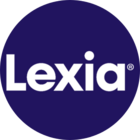Explaining structured literacy and the science of reading can indeed be challenging, especially with so many misconceptions floating around. I agree with you—Emily Hanford’s “Sold a Story” is an excellent resource for understanding the science of reading and the pitfalls of some traditional methods. It’s a great way to help parents and colleagues grasp why structured literacy is so important.
Here’s a concise elevator pitch that might help:
Elevator Pitch: “Structured literacy is an evidence-based approach to teaching reading that emphasizes systematic, explicit instruction in phonics, vocabulary, and comprehension. Unlike the idea that children will naturally pick up reading through exposure, structured literacy ensures that all students, including those with dyslexia, receive the foundational skills they need to decode and understand text. This method is grounded in decades of research showing that explicit teaching of these skills is crucial for reading success.”
Addressing Misconceptions:
- Exposure Alone Isn’t Enough: While exposure to books is important, it doesn’t replace the need for direct instruction in phonics and decoding skills.
- Silent Reading: Silent reading can be beneficial, but it should complement, not replace, structured literacy instruction.
- Science of Reading: This approach is backed by extensive research and has been shown to be effective across diverse student populations.

 ), there’s a lot of work we need to do to ensure that everyone is up to speed!
), there’s a lot of work we need to do to ensure that everyone is up to speed! 

